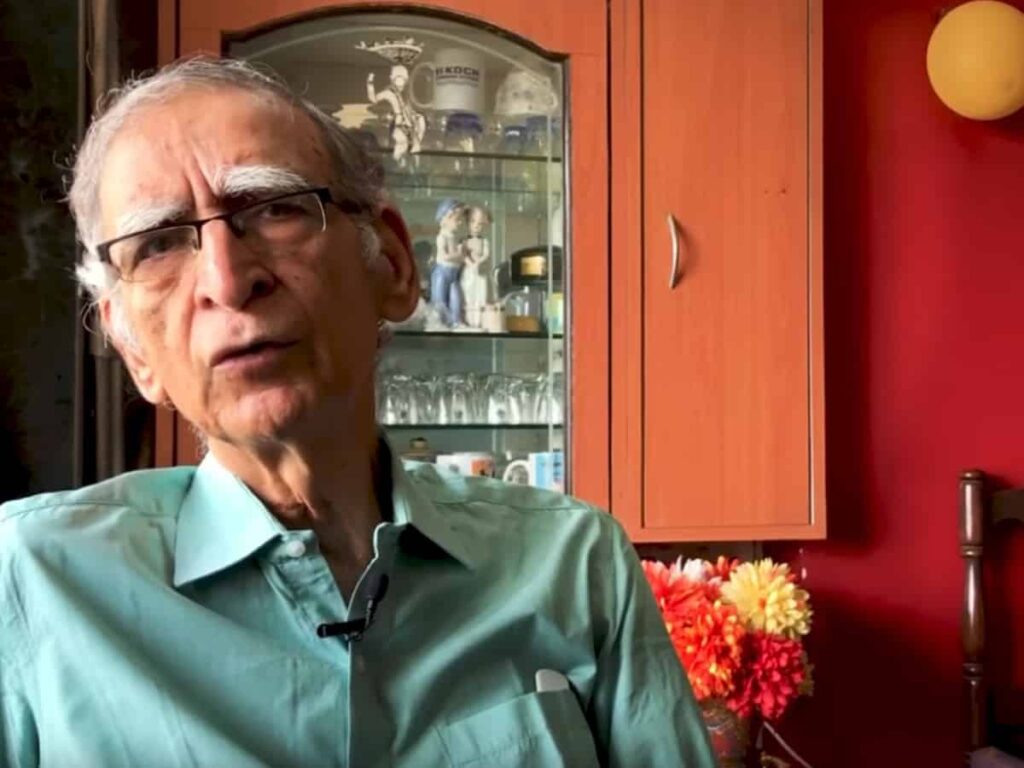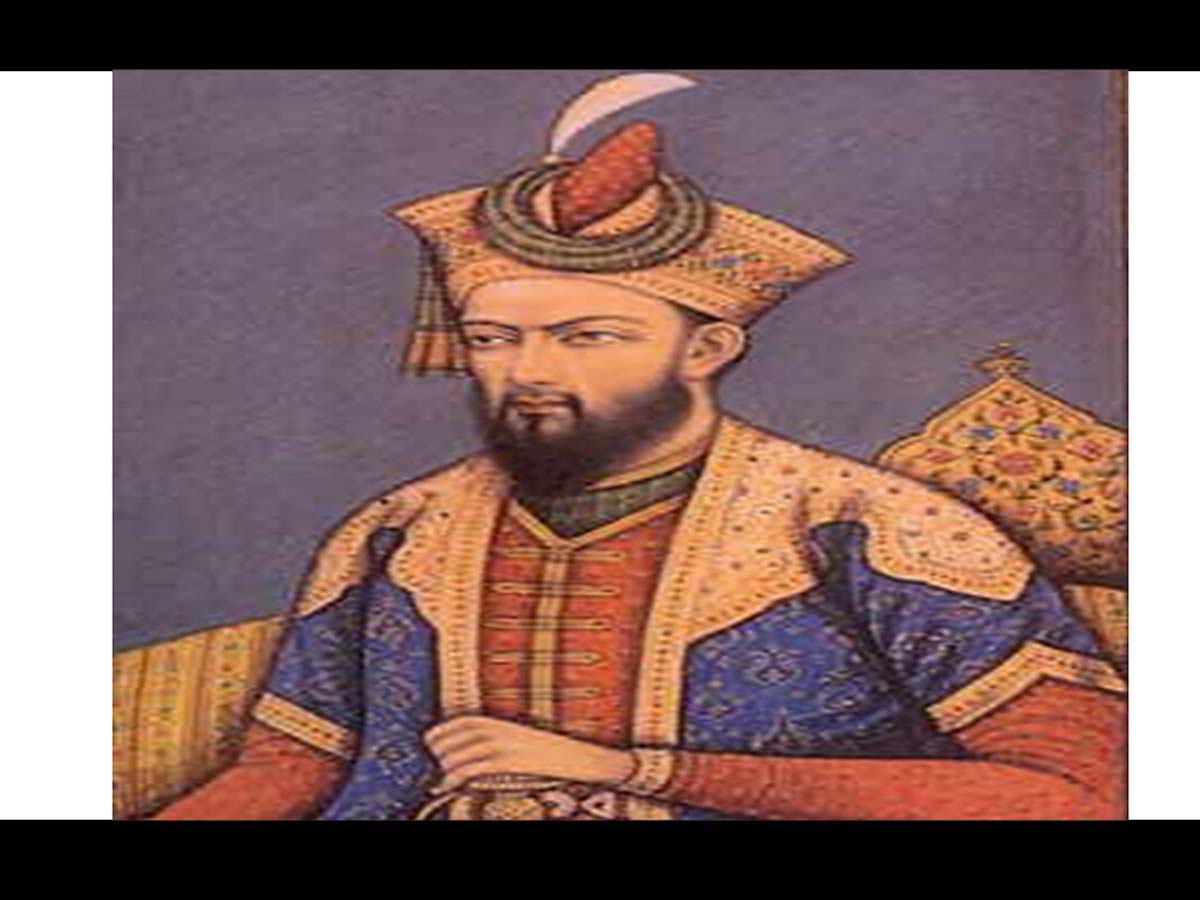The Moghul Emperor Aurangzeb is the most controversial figure in Indian history. There is a concerted effort to portray him as an intolerant, extremist, and anti-Hindu who persecuted the Hindus and destroyed temples.
Prof. Ram Puniyani has done extensive research on Indian history. He is invited by reputed institutes to discuss issues relevant to India and the Indian people. He is considered unbiased, bright, and analytical. His ability to look at historical facts with rationalism and wisdom makes him most loved and respected among all open-minded people, who want to see India on path of growth and progress. His ability to bring out facts from a bundle of myths makes him stand out.
During his recent interview with a Hindi channel, Prof. Ram Puniyani debunked the historical distortions that Aurangzeb persecuted Hindus and demolished their temples.
“Aurangzeb,” says Prof Puniyani, “is the most controversial among the Mughal rulers even though due to his sagacity and political acumen he expanded the Indian subcontinent empire from Afghanistan to Bengal and from Kashmir to Deccan. He was the one who truly made India an ‘Akhand Bharat’ which included Afghanistan, Bangladesh, India, and Pakistan during his rule. No emperor ever ruled such a vast empire in Indian history before or after him. During his rule the Indian GDP was one-fourth of the total world’s GDP. Even Western Europe’s collective GDP was less than India’s GDP then.”

In spite of such great achievements and his rule over such a vast empire, this Mughal emperor was surrounded by controversies that he killed Hindus, forced them to convert to Islam, and demolished their temples.
According to Ram Puniyani Aurangzeb was a devout Muslim practicing his religion and was clearly under the influence of Islamic scholars. According to some historians, he led a very simple life and rarely used the state’s treasury for his personal needs. He used to weave caps and calligraph the Holy Quran to earn his livelihood.
Regarding imposing “Jaziya” (Protection of Non-Muslim Tax) on Hindus, Puniyani says Aurangzeb did not impose Jaziya for the first twenty years of his rule. However, after twenty years Aurangzeb needed money for his conquest of Golconda – an impregnable fort – the seat of the Qutub Shahi rulers. The amount of Jaziya was a negligible 1.25% per annum which exempted poor, women, old men, and children. While the amount of Zakat (yearly tax on Muslims) was 2.5% per annum. The allegation that Jaziya was imposed on Hindus to force them to change their religion, Paniyani points out that against a paltry amount of 1.25% per year, no one would have changed his religion.
Prof Puniyani quotes the book “Composition of Mughal Dynasty” by Athar Ali in showing the fact that the number of Hindu Rajas which were around 20% earlier increased to 33% during his rule. Hindus occupied top posts in his bureaucracy and they were in substantial numbers.
“Aurangzeb expanded his empire not only by war expeditions but by sheer diplomacy, wisdom, and political acumen. He was an able ruler and administrator with many qualities which enabled him to rule for 48 years,” Puniyani says.
Regarding the demolition of Kashi Vishwanath Temple, Puniyani refers to the book “Feathers and Stones” by Dr. Pattabhi Sitaramayya wherein he stated that some unethical activities were going on in the temple precinct and some Hindu Rajas complained to Aurangzeb that since the temple lost its sanctity and hence it ought to be demolished.
“Dr.Bishambhar Nath Pande, a freedom fighter and historian,” says Puniyani, “collected all farmaans (Royal decrees) of Aurangzeb issued in favor of temples and their priests and published it as a book. According to these farmaans Aurangzeb granted Jageers (feudal land grants) to dozens of temples for their upkeep and maintenance.”
Against the demolition of few temples, Aurangzeb ordered the construction of many Hindu temples prominent among them being Ujjain’s Mahakaleshwar Mandir, Guwahati’s famous Kamakhya Devi temple, and Vrindavan’s Bhagwan Krishna Mandir to which he donated golden bracelets and jewelry which are kept in the local Collector’s office and use to decorate the deity during the festivals.
Puniyani also narrates an interesting tale of Aurangzeb ordering the demolition of a mosque in Golconda because the Qutub Shahi King refused to give tribute to Aurangzeb for three consecutive years citing financial difficulties. However, one of Aurangzeb’s spies informed him that the Qutub Shahi King hid his treasure under a mosque. Thus, Aurangzeb ordered the demolition of the mosque.
Puniyani says that a person should be assessed on the basis of overall personality with all his traits – positive or negative – and not because of few aberrations during a long reign of 48 years. Instead of taking all aspects of his rule and facets of his personality, those with vested interests take only those aspects which serve their communal agenda. “The kings are supposed to take policy decisions for the welfare of their people to rule them and earn their loyalty but now some people are deliberately trying to portray his rule as Hindu versus Muslim conflict which absolutely was not the case,” Puniyani clarifies.
“Aurangzeb hated communal dissension between Hindus and Muslims and sectarian strife between Shias and Sunnies,” Puniyani says.
Regarding Sikh Muslim relations, Aurangzeb wrote to his Punjab Governor to communicate with Guru Govind Singh. Guru Govind Singh wrote to Aurangzeb asking for a meeting. Aurangzeb invited him to come and meet him in Deccan. But while Guru Govind Singh was on his way to meet Aurangzeb he got the news of his demise. However, after the death of Aurangzeb, the next Moghul Ruler Bahadur Shah met Guru Govind Singh and had a peace agreement with him.
With regard to the Aurangzeb and Sambhaji conflict, Puniyani says, “Aurangzeb wanted to conquer all of the south and hence he stayed there for 20 years. During this time there was simmering conflict between Sambhaji and Aurangzeb and when Aurangzeb finally captured Sambhaji he put a condition before him that if he converts to Islam he will spare his life. “This condition was more to embarrass the defeated king then to force the common Hindu population to embrace Islam. Sambhaji refused to accept that condition and as a result, he had to suffer and was killed,” explains Puniyani.
About the allegation that the Kashmiri Pandits were forced to embrace Islam, Puniyani quotes Narayan Kaul’s “History of Kashmir” that after the death of Aurangzeb’s Governor Saif Khan his son, the new governor, Iftikhar Khan was forcing Kashmiri Hindus to embrace Islam. Kaul mentioned in his book that the advisor of Saif Khan was a Kashmiri Hindu and that it was unlikely that in the presence of a Hindu advisor such forced conversion might have taken place.
Regarding demonizing Aurangzeb, Puniyani blames the Britishers for deliberately creating dissension between Hindus and Muslims to implement their policy of “divide and rule”. They tried to portray the Muslim rule in general and Aurangzeb’s rule in particular as biased towards the Hindu population. Unfortunately, the Indian communalists grabbed the British narrative and exaggerated it in tarnishing Aurangzeb and his rule.
The second most feasible reason for this demonization is that, unlike other Moghul Kings, Aurangzeb was not fond of wine, singing and dance. There was a huge industry connected with the Moghul Court since Akbar’s time. Since the ascension of Aurangzeb to the throne, those singers, dancers and others who were rendered jobless due to Aurangzeb’s puritanical Islam spread across the country and contributed greatly in tarnishing his image and portraying him as an intolerant and bad king.
“It is pertinent to note here that Aurangzeb ruled India for 48 years and if he really wanted to force his Hindu population to convert to Islam the whole population of the country would have been converted and not a single temple would have survived today which is not the case,” concludes Puniyani.


